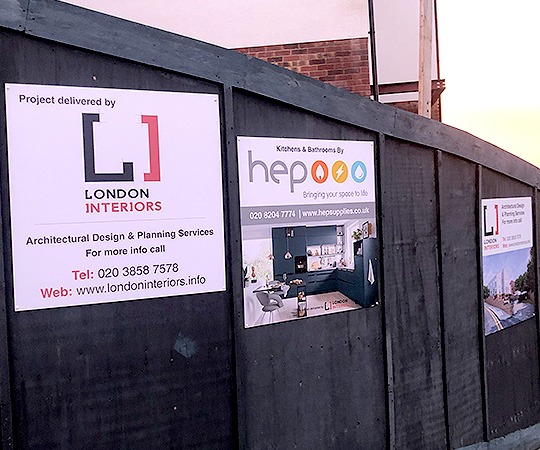
In the ever-evolving construction industry, the integration of smart materials into building components has revolutionised design, performance, and sustainability. Aluminium composite panels (ACPs) have long been favoured for their durability, aesthetic versatility, and lightweight nature. However, the incorporation of smart materials into ACPs is setting new benchmarks in architectural innovation. This article delves into the role of smart materials in ACPs, particularly focusing on their applications in construction site hoarding, and highlights how companies like Hoarding Printing Company are at the forefront of this transformation.
Understanding Aluminium Composite Panels
Aluminium composite sheets are engineered materials made up of two thin layers of metal enclosing a non-aluminum core, which is usually formed of hdpe or mineral-filled solids. This construction imparts several key properties:
- Lightweight Yet Strong: ACPs combine a lightweight structure with exceptional strength, offering high rigidity and impact resistance. This makes them ideal for high-rise buildings and facades, where reducing structural load is crucial without compromising durability.
- Thermal and Acoustic Insulation: The core material of ACPs provides effective thermal insulation, reducing heat transfer and helping to maintain indoor temperatures. Additionally, ACPs offer acoustic insulation, reducing external noise—perfect for urban environments where sound control is essential.
- Design Flexibility: ACPs may be easily folded, bent, or formed into complicated shapes including as curves, domes, and triangles while maintaining strength. The aluminium composite board adaptability allows for intricate detailing and unconventional forms, making it a preferred choice for innovative architectural designs.
These attributes make ACPs a popular choice for applications ranging from building facades to signage and hoarding systems.

Introduction to Smart Materials
Smart substances are compounds that react with outside stimuli like pressure, temperature, light, and moisture. They can adapt their properties in a controlled manner, offering dynamic performance characteristics. Common types of smart materials include:
- Self-Healing Materials: Self-healing materials autonomously repair damage, such as cracks or scratches, by releasing healing agents when needed, enhancing the longevity and durability of structures.
- Shape Memory Alloys and Polymers: Shape memory alloys and polymers revert to their original shape after deformation when exposed to specific stimuli like heat, offering adaptability in design and function.
- Piezoelectric Materials: Piezoelectric materials generate an electric charge in response to mechanical stress, enabling them to function as sensors or actuators in various applications.
- Thermochromic and Photochromic Materials: Thermochromic and photochromic materials change colour in response to temperature or light, respectively, allowing for dynamic and responsive design elements.
Integrating these materials into ACPs enhances their functionality, enabling buildings to adapt to environmental changes and user needs.
Integrating Smart Materials into ACPs
The fusion of smart materials with ACPs leads to the development of advanced building components with enhanced capabilities:
1. Enhanced Durability
Self-healer coatings on aluminum composite panels automatically repair tiny scratches and damage, increasing panel toughness and extending its lifespan. This feature is especially beneficial in high-traffic areas and harsh environments, reducing maintenance needs and preserving structural integrity.
2. Adaptive Aesthetics
Thermochromic and photochromic coatings on ACPs enable facades to change colour with temperature or light shifts. This smart feature allows buildings to transform their appearance dynamically throughout the day or seasons, boosting visual appeal and architectural interest.
3. Structural Health Monitoring
Integrating piezoelectric sensors into ACPs enables real-time monitoring of structural health. These sensors detect stress, strain, and damage, delivering crucial data for proactive maintenance and enhanced safety evaluations of building facades.
4. Energy Efficiency
Phase-change materials (PCMs) in ACPs absorb and release heat to regulate indoor temperatures. This adaptive thermal management reduces rely on cooling and heating systems, increasing energy efficiency and lowering total usage of energy in buildings.
Benefits of Smart ACPs in Construction
The integration of smart materials into ACPs offers several advantages:
- Sustainability: Smart ACPs enhance energy efficiency, lowering carbon emissions and aiding in sustainability goals. Their eco-friendly features support compliance with green building standards like LEED and BREEAM, promoting responsible construction.
- Cost-Effectiveness: Smart aluminium composite boards (ACPs) offer durability and low maintenance, leading to long-term cost savings by reducing the need for frequent repairs and replacements.
- Aesthetic and Functional Versatility: Smart ACPs offer design flexibility by adapting to environmental changes, enabling innovative architecture that blends aesthetics with functionality for more responsive and efficient buildings.
- Enhanced Safety: Real-time monitoring of structural health ensures early detection of potential issues, enhancing occupant safety by enabling timely maintenance and interventions.
Applications in Construction Site Hoarding
These construction site hoarding serves multiple purposes: it ensures safety, provides security, and offers branding opportunities. The incorporation of smart ACPs into hoarding systems enhances these functions:
- Dynamic Branding: Smart aluminium composite boards allow hoardings to dynamically change their appearance, adapting to various construction phases or marketing campaigns, offering versatility and enhancing visual impact throughout the project lifecycle.
- Structural Monitoring: Embedded sensors in smart ACPs monitor stress and impact in real time, helping maintain structural integrity and boosting safety on construction sites by enabling early detection of potential issues.
- Energy Efficiency: The thermal properties of smart ACPs help maintain stable temperatures on construction sites, enhancing worker comfort and reducing energy usage by limiting the need for artificial heating or cooling.
We are leading the way in providing customised hoarding solutions that incorporate these advanced materials, offering clients both functionality and visual appeal.

Innovative Applications and Project Outcomes
A number of initiatives have successfully included smart ACPs into their designs.
- Urban Facades: Buildings in metropolitan areas have utilised thermochromic ACPs to create facades that change colour with the seasons, enhancing aesthetic appeal and energy efficiency.
- Signage Systems: Retail establishments have employed piezoelectric sensors in ACP signage to monitor foot traffic and environmental conditions, optimising marketing strategies.
- Hoarding Applications: Construction sites have adopted smart ACP hoardings that not only advertise but also monitor structural integrity and adapt to environmental changes.
These examples demonstrate the versatility and benefits of smart ACPs in various applications.
Conclusion
The integration of smart materials into aluminium composite panels marks a significant advancement in construction technology. These innovations enhance the functionality, sustainability, and aesthetic appeal of building components, paving the way for smarter, more adaptive structures. As the industry continues to embrace these technologies, companies like Hoarding Printing Company are at the forefront, providing cutting-edge solutions that meet the evolving needs of modern construction.





